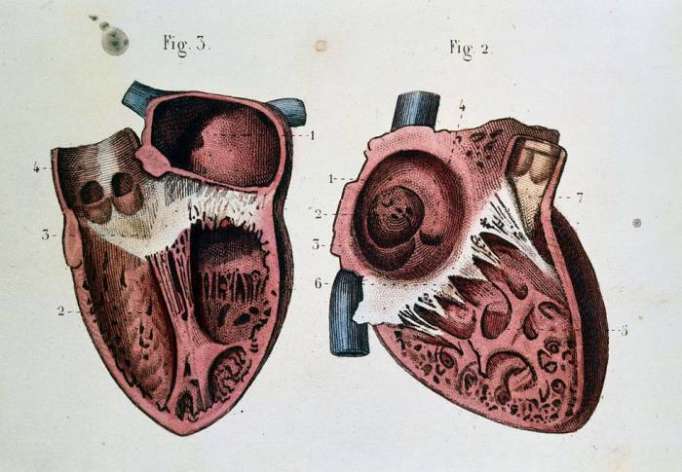"I read your piece," he said.
I smiled awkwardly. His son had autism, but we'd never discussed it. What came next shocked me. "How can you say vaccines don't cause autism?"
At first I thought he was joking. But no: Luke is an anti-vaxxer, convinced that childhood vaccines are a pharmaceutical conspiracy. He blames vaccines for his son's autism. He mistrusts doctors in general, and he and his wife (a cardiologist, remember) follow a natural lifestyle that minimizes interaction with them. He also believes eggs and milk cause cancer.
I didn't know what to say. I never thought someone with Luke's background and intellect could defend beliefs that science had thoroughly debunked.
Luke isn't alone. Thousands of well-educated people share such erroneous beliefs. With the help of my father, Jack Gorman, M.D., I began to explore why people develop these mindsets and wrote the book Denying to the Grave: Why We Ignore the Facts That Will Save Us. You're about to learn the neurological basis for how such thinking "narrows" the brain and how to reverse the process in yourself and others. But first, let's take a look at six prevailing health myths that some people still believe.
Myth 1: Childhood Vaccines Cause Autism
The Origin
In 1998, the British gastroenterologist Andrew Wakefield published a study in The Lancetclaiming a link between autism and the MMR (measles, mumps, rubella) vaccine children receive. The finding terrified parents and reverberates to this day. According to CDC data, nonmedical exemptions for school-required immunizations are rising in 11 states. Measles is an illness that can kill. Despite that, a 2015 CNN poll found anti-vaxxer parents more likely to be wealthier, white, and college educated. Of those surveyed, 57 percent cited "concerns about autism" as the reason for not vaccinating their kids.
The Truth
The Lancet retracted the Wakefield study in 2010, citing invalid science. As it turns out, Wakefield had committed fraud by taking money from vaccine injury lawyers and falsifying data. He later lost his medical license. The American Academy of Pediatrics now lists 20 pages of studies and other evidence showing no link between vaccines and autism. Researchers also warn that a mere 5 percent decline in MMR immunizations among 2- to 11-year-olds would triple the annual number of measles cases in this age group nationwide, resulting in $2.1 million in yearly health care expenditures and needlessly claiming young lives.
Myth 2: A Low-Fat Diet Will Prevent Heart Disease
The Origin
In the 1940s, heart disease was the top killer in the United States. To identify the causes, many studies were launched, including the landmark Framingham Heart Study and the Seven Countries Study. The latter examined risk factors across cultures and linked diets high in saturated fat to heart disease. The American Heart Association endorsed the findings and sounded the alarm on saturated fat. Companies responded with low-fat processed foods. Belief in the heart-healthy benefits of a low-fat diet still persists today, even though heart disease remains the leading cause of death in the nation.
The Truth
Hundreds of millions of dollars have been spent trying to replicate the Seven Countries finding, without success. In fact, the study's methodology has come into question. In November, new research in The Lancet spanning 18 countries across five continents concluded that "total fats and types of fat were not associated with cardiovascular disease." Ironically, reaction to that original flawed science turned out to be the real killer. Since low-fat food is bland, food producers added sugar. We now know that sugar is extremely harmful to health. According to a 2014 JAMA Internal Medicine study, people who get 25 percent or more of their daily calories from added sugar are more than twice as likely to die of heart disease as those who get 10 percent or less. And that's regardless of age, sex, physical activity, and body mass index.
Myth 3: PSA Screening for Younger Men Saves Lives
The Origin
Prostate cancer is the most common cancer among men, and it's second only to lung cancer in deadliness. PSA stands for "prostate-specific antigen," and the test measures blood levels of this protein; a high number can suggest prostate cancer. In 1994, the FDA approved routine PSA screening for asymptomatic men. Since it's such a simple, noninvasive way to apparently detect a dreaded disease, physicians prescribe and patients request an estimated 20 million PSA tests annually.
The Truth
Mass PSA screening does more harm than good. In a 2010 New York Times editorial, even the doctor who discovered PSA called large-scale testing a "profit-driven public health disaster." In 2012, the U.S. Preventive Services Task Force advised against routine testing, citing evidence that about 80 percent of results are false positives. Unnecessary treatments can include painful biopsies, surgery, and radiotherapy. Experts estimate that up to five of every 1,000 men who undergo prostate cancer surgery die within a month, and at least 200 of every 1,000 men who have radiotherapy and surgery for prostate cancer suffer complications like urinary incontinence, erectile dysfunction, and/or bowel problems. The American Urological Association no longer recommends routine PSA screening for men younger than 55 unless they have risk factors (like smoking, being overweight, or having a family history of prostate cancer).
Myth 4: Raw Milk Is Healthier Than Pasteurized
The Origin
It's difficult to pinpoint when or where this idea started, but the raw milk movement has been gaining momentum. Twelve U.S. states now permit sales of raw milk in stores, and 13 more allow it to be sold on the farm where it was produced. Pasteurization involves heating milk to kill harmful bacteria, but raw milk proponents claim the heat also kills important nutrients and that consuming pasteurized dairy products causes allergic reactions and symptoms of lactose intolerance.
The Truth
The FDA says no there's evidence that raw milk is any more beneficial than the pasteurized stuff. In fact, the opposite is true: While unpasteurized dairy products such as milk and cheese are consumed by a little more than 3 percent of the population, they cause 96 percent of the illnesses originating from contaminated dairy products, according to the CDC. That's 840 times more illness and 45 times more hospitalization than from pasteurized dairy products. Infection from harmful bacteria in raw milk (like salmonella, E. coli, and listeria) can result in organ failure, miscarriage, paralysis, or death.
Myth 5: For Lower-Back Pain, Spinal Fusion Is Best
The Origin
The vertebrae lining your backbone are cushioned by shock-absorbing discs. Over time, disc damage leads to micromovements that can trigger pain. Also, spinal nerves can be pinched, resulting in radiating leg pain. On an X-ray, CT scan, or MRI, the narrowing of space between vertebrae is often interpreted as disc degeneration and the source of pain. It would seem logical, then, that fusing vertebrae and/or removing bone would limit micromovements, make space for nerves, and ease the ache. This thinking led to a 70 percent spike in such surgeries from 2001 to 2011. About 400,000 are done annually.
The Truth
A recent study determined that up to 40 percent of people who undergo back surgery could continue to have significant pain afterward. Plus, rates of complication from such operations — some life-threatening — can be upwards of 20 percent. In fact, even with today's medical advances, finding the cause of lower-back pain is very difficult. About 85 percent is the "nonspecific" type--no cause identified--and surgery is typically not the best option for these cases. In 2017, the American College of Physicians published new guidelines, recommending that doctors choose non-pharmacologic, nonsurgical options, such as exercise, physical therapy, and cognitive behavioral therapy, to treat both acute and chronic lower-back pain.
Myth 6: Shock Therapy Causes Brain Damage
The Origin
Passing an electric current through the brain to spark a chemistry-shifting seizure seems crude if not barbaric. Hollywood portrays restrained patients convulsing in pain before becoming passive and sustaining permanent memory loss and personality changes. (See: One Flew Over the Cuckoo's Nest and American Horror Story: Asylum.) Indeed, in 1950s psychiatric hospitals, electroconvulsive therapy (ECT) was used to "treat" everything from unruly behavior to homosexuality. And those perceptions persist: In a U.K. survey, about 20 percent of respondents said they fear dying if they receive ECT.
The Truth
For people dealing with severe, treatment-resistant depression, ECT is often the only option. While antidepressant meds generally have a 50 to 60 percent success rate, ECT is effective 70 to 90 percent of the time. Studies consistently show that memory loss from ECT is usually temporary and that the treatment is safe. Patients also experience no pain from the current, and there's no visible convulsing. Overall, ECT is a highly effective antidepressant treatment--and for suicide prevention, it's significantly superior to drug therapy. What's more, patients often see dramatic improvement after just a week or two of ECT, versus the six to eight weeks needed for antidepressants to take full effect. Then there are the drugs' possible side effects: weight gain, sex drive changes, sleep disturbances, and upset stomach.
Read the original article on popularmechanics.com.
More about: health
















































